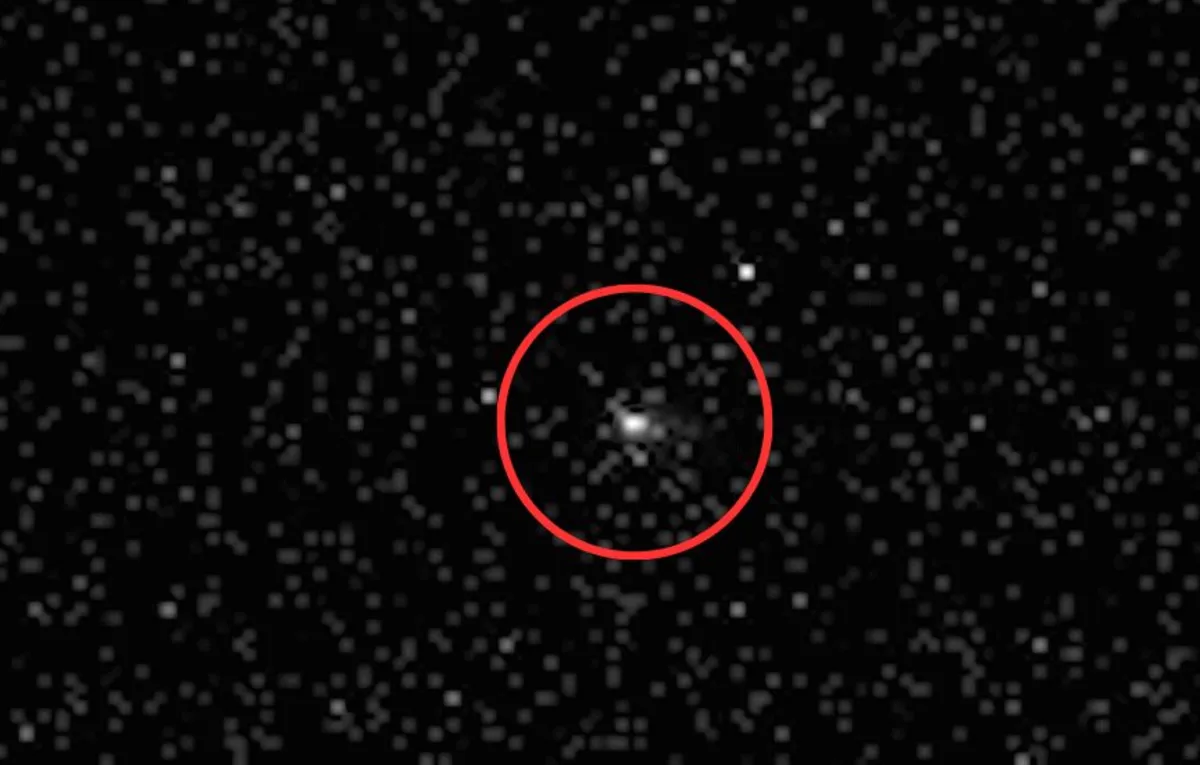
In a remarkable achievement, China has outpaced the United States by releasing the first images of the rare interstellar comet 3I/ATLAS as it made its close approach to Mars. On October 3, 2023, the comet came within approximately 18 million miles of the Red Planet. Both China's Tianwen-1 Mars Orbiter and NASA's Mars Reconnaissance Orbiter (MRO) successfully captured images of the comet. However, while NASA's images are currently unavailable due to the ongoing U.S. government shutdown, China has already shared its stunning photos with the global community.
This week, the China National Space Administration (CNSA) unveiled the images captured by the Tianwen-1, showcasing the comet's bright nucleus enveloped by a vast coma measuring between 3,100 and 6,200 miles across. These images were taken using the orbiter's High-Resolution Imaging Camera (HiRIC), which has been in orbit around Mars since February 2021. According to the CNSA, this marks the first successful attempt to photograph such a distant and relatively faint target, with brightness levels ranging from 10,000 to 100,000 times darker than typical Martian surface targets.
Through collaborative research conducted by the Tianwen-1 team, the CNSA assessed the feasibility of the observation mission by analyzing the orbital characteristics, brightness, geometric dimensions, and technical capabilities of the orbiter's scientific payload. The CNSA stated that the comet's defining features are clearly visible in the images, which depict the comet's core and its extensive coma spanning thousands of kilometers.
NASA's Mars Reconnaissance Orbiter also photographed 3I/ATLAS using its HiRISE camera, which boasts a 19.7-inch aperture, allowing it to capture sharper images compared to Tianwen-1's 15.2-inch HiRIC. The data from MRO is said to provide approximately three times the resolution of images taken by the Hubble Space Telescope in July. Unfortunately, the U.S. images have not yet been released due to the ongoing federal government shutdown, which began on October 1 and is now the longest in U.S. history.
In light of the current situation, Rep. Anna Paulina Luna (R-Florida) expressed her intention to facilitate the release of these important comet images. On Wednesday, she reported having a productive conversation with NASA about making the comet images public. Luna had previously reached out to Acting Administrator Sean Duffy on October 31, urging the agency to release the data despite the government shutdown. She shared on X that once the government reopens, images and data will be made available, but bureaucratic reasons currently prevent their release.
Harvard professor and astronomer Avi Loeb, who has also advocated for the release of the MRO images, remarked in his blog, "Here's hoping for better images from NASA's HiRISE in the coming days." Loeb has previously speculated that 3I/ATLAS could potentially be an alien probe due to its unique characteristics.
Around October 29-30, 3I/ATLAS reached perihelion, its closest approach to the Sun. The R. Naves Observatory released new post-perihelion images that depict a faint sphere of light without a visible tail. Loeb described this observation as surprising, noting that the morphology of its coma appears similar to what was seen in Hubble images from July. He calculated that the mass fraction lost during the perihelion passage of 3I/ATLAS exceeds 13%, a significant figure for a typical comet.
Loeb explains that such mass loss should typically result in a prominent coma with dust and gas, which solar radiation pressure and solar wind would shape into a classic cometary tail pointing away from the Sun. However, he now highlights the absence of a cometary tail among the numerous anomalies associated with 3I/ATLAS, including its unusually massive nucleus, high speed, rapid brightening near perihelion, and its unexpected shift to a bluer hue compared to the Sun.